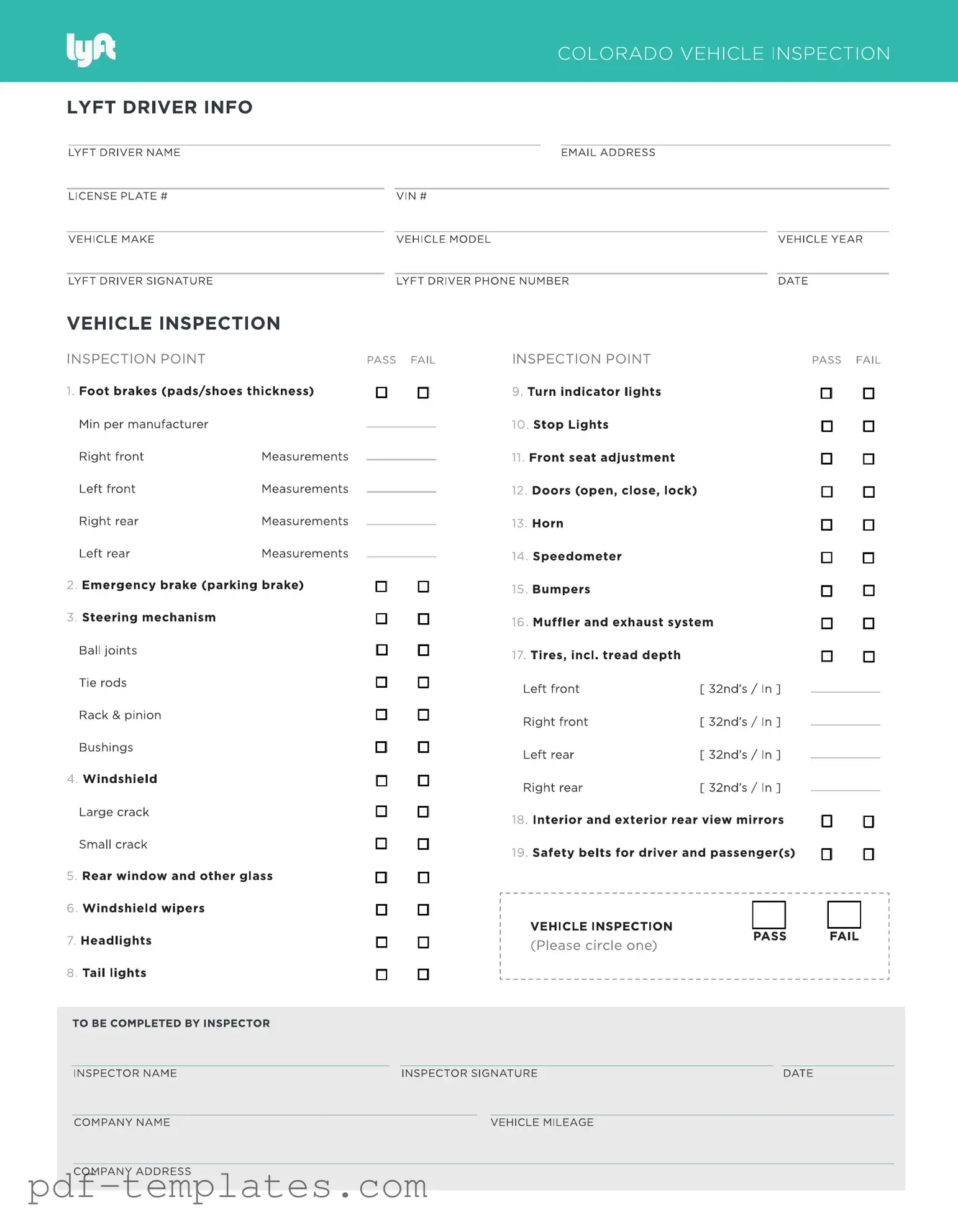The Vehicle Inspection Report is a document that shares similarities with the Lyft Inspection form. Both documents serve the purpose of assessing the condition of a vehicle before it is approved for use in a rideshare capacity. They typically include sections for recording the vehicle's make, model, year, and VIN. Additionally, both forms require the inspector to note any damages or mechanical issues, ensuring that the vehicle meets safety standards for passenger transport.
The Pre-Trip Inspection Checklist is another document comparable to the Lyft Inspection form. This checklist is used by drivers to evaluate their vehicles before beginning a trip. Like the Lyft Inspection form, it includes items such as tire pressure, fluid levels, and brake functionality. The emphasis on safety and operational readiness is a common thread, as both documents aim to prevent breakdowns and accidents during rideshare operations.
The DMV Vehicle Safety Inspection form is similar in its intent to ensure that vehicles are safe for public use. This form is mandated by state regulations and includes detailed assessments of various vehicle components. Much like the Lyft Inspection form, it requires documentation of any repairs needed to pass inspection. Both documents are essential for compliance with safety standards, although the DMV form is often more comprehensive and legally required for all vehicles.
The Fleet Maintenance Log serves as another related document. This log tracks the maintenance and repairs performed on a vehicle over time. Similar to the Lyft Inspection form, it includes records of inspections, repairs, and any issues identified. Maintaining a detailed log helps ensure that vehicles remain in good condition and meet safety requirements for rideshare services.
The Uber Vehicle Inspection form is directly comparable to the Lyft Inspection form, as both are used by rideshare companies to evaluate vehicles. Each form requires similar information regarding the vehicle's condition and safety features. Both documents aim to ensure that vehicles are suitable for transporting passengers and adhere to company standards.
The Commercial Vehicle Inspection Report is another document that shares characteristics with the Lyft Inspection form. This report is used for larger vehicles that transport goods or passengers. Both forms assess the vehicle's safety features and overall condition. They include sections for documenting any repairs or maintenance needs, ensuring that the vehicle is compliant with safety regulations.
Another important form related to vehicle transactions is the Trailer Bill of Sale, which is crucial for verifying ownership transfer. This document serves to provide both parties with a clear record of the sale, much like the process involved in maintaining a vehicle's safety and compliance. A well-documented transaction using forms like the Trailer Bill of Sale helps mitigate disputes that may arise in the future, and for more information on creating one, you can visit https://documentonline.org/blank-trailer-bill-of-sale.
Finally, the Rental Vehicle Inspection form is similar in that it documents the condition of a vehicle before it is rented out. Both the Rental Vehicle Inspection form and the Lyft Inspection form focus on identifying existing damages and mechanical issues. This helps protect both the rental company and the driver by ensuring that the vehicle is safe and operational before use.
